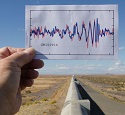Chemists make major strides in organic semiconductors
will.ferguson
Washington State University chemists have created new materials that pave the way for the development of inexpensive solar cells. Their work has been recognized as one of the most influential studies published in the Journal of Materials Chemistry in 2016.
Professors Ursula Mazur and K.W. Hipps, postdoctoral researcher Bhaskar Chilukuri and graduate students Morteza Adinehnia and Bryan Borders grew chain-like arrangements of organic nanostructures in the laboratory and then used mathematical models to determine which arrangements were the best conductors of light and electricity.
Journal editors recognized the WSU study as an important step in the advancement of organic semiconductors that perform on par with metal- and silicon-based electronics. They included the work in a collection of 2016’s most influential research publications, or “Hot Papers.”
Find out more



